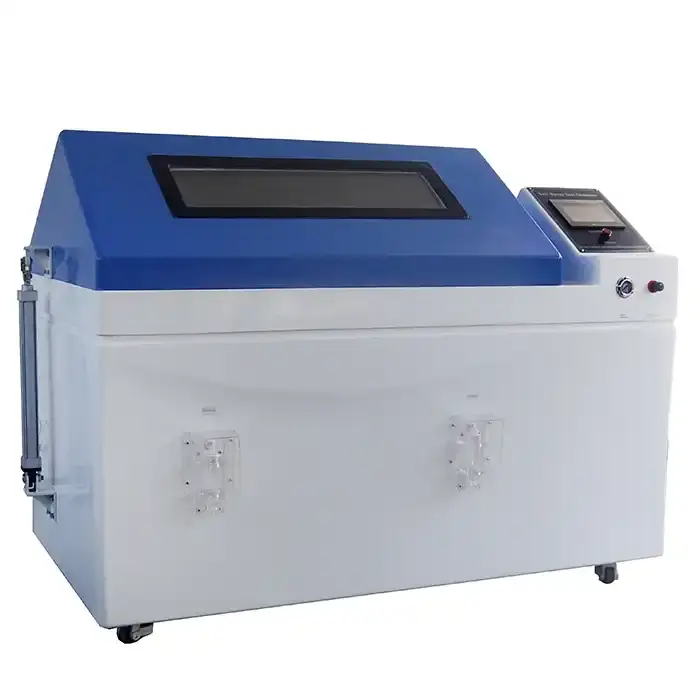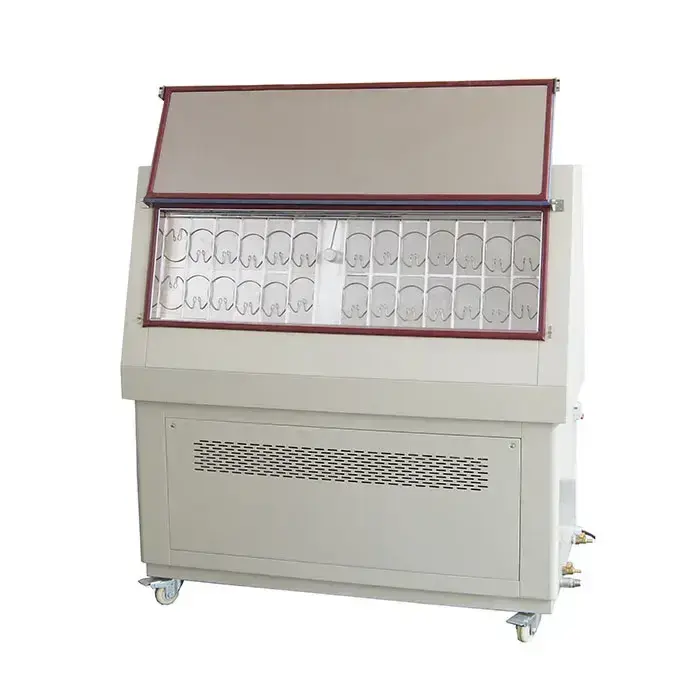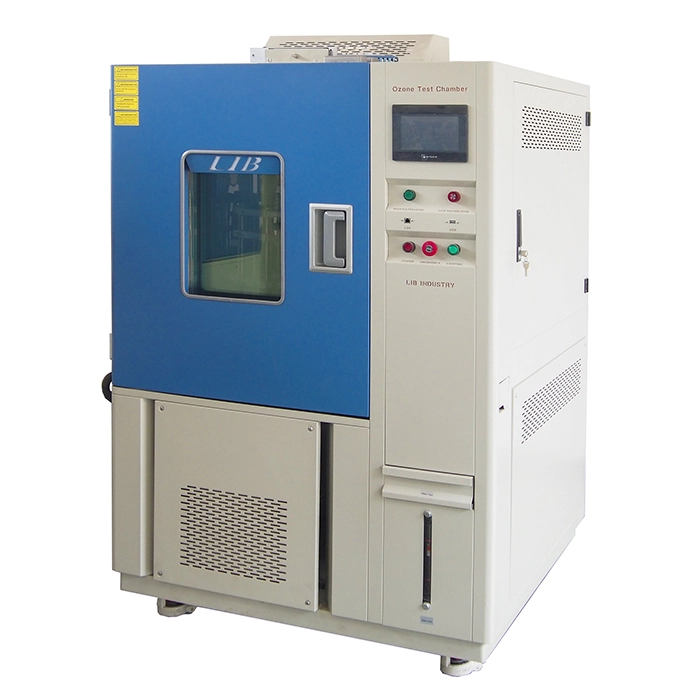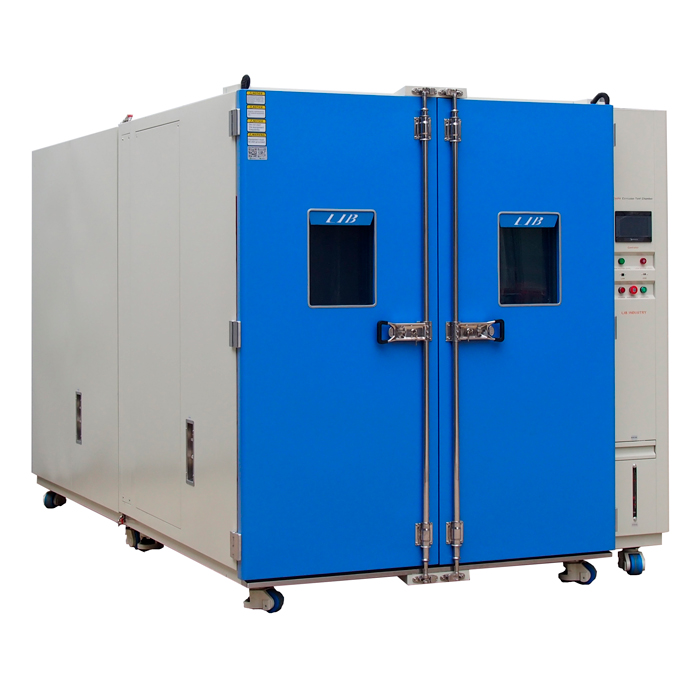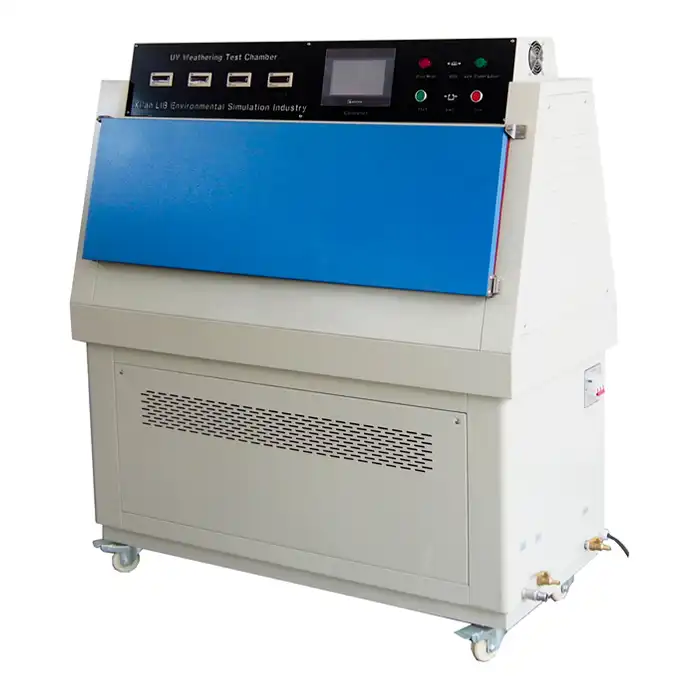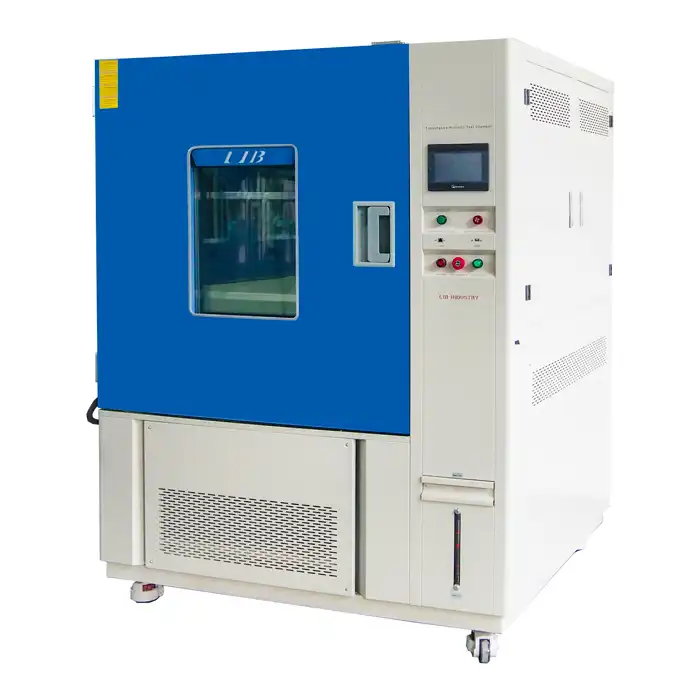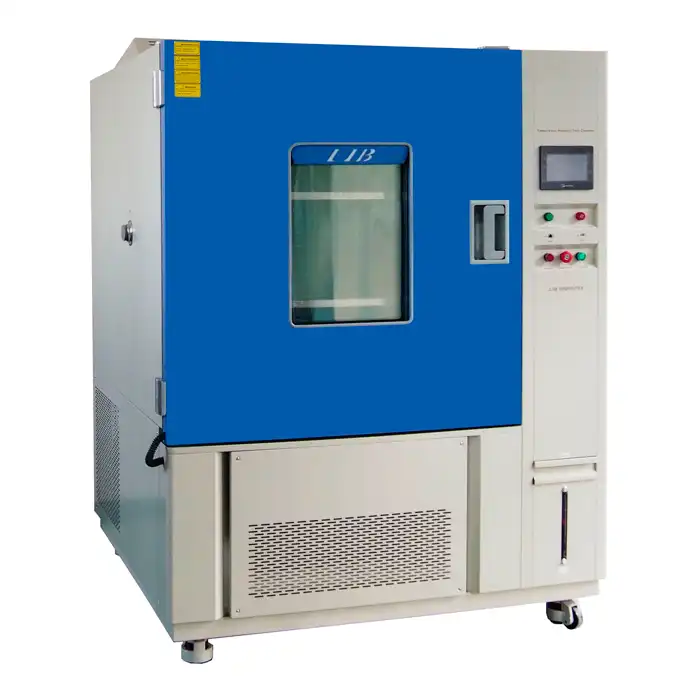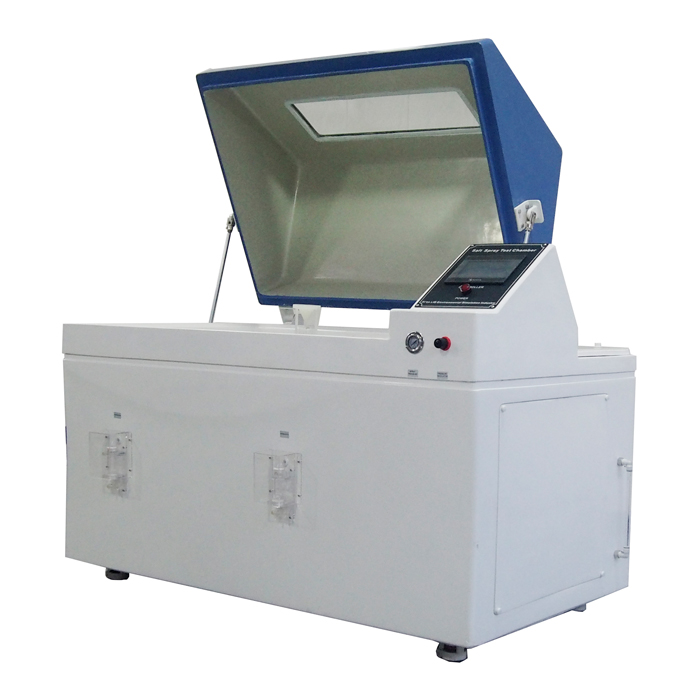What are the benefits of using ASTM G85 Salt and SO2 Spray Test Chamber for corrosion testing?
ASTM G85 salt and SO2 spray test chambers offer numerous benefits for corrosion testing, making them indispensable tools in various industries. These chambers simulate harsh environmental conditions, allowing manufacturers to evaluate the corrosion resistance of materials and coatings effectively. By utilizing an ASTM G85 chamber, companies can assess product durability, improve quality control, and ensure compliance with industry standards. The combination of salt spray and sulfur dioxide creates a highly corrosive atmosphere, providing more accurate and accelerated results compared to traditional salt spray tests. This advanced testing method enables businesses to identify potential weaknesses in their products, optimize material selection, and develop more robust corrosion protection strategies, ultimately leading to enhanced product performance and longevity in real-world applications.
Understanding the ASTM G85 Salt and SO2 Spray Test Chamber
The Science Behind ASTM G85 Testing
The ASTM G85 salt and SO2 spray test chamber is a sophisticated piece of equipment designed to simulate corrosive environments. This test method combines the effects of salt spray with sulfur dioxide gas, creating a highly aggressive atmosphere that accelerates the corrosion process. The chamber operates by atomizing a salt solution and introducing sulfur dioxide gas at controlled intervals, exposing test specimens to a cyclic corrosive environment.
This unique combination of salt and SO2 replicates real-world conditions more accurately than traditional salt spray tests. The sulfur dioxide interacts with the salt solution, forming sulfurous acid, which significantly enhances the corrosive potential of the test environment. This process mimics industrial and marine atmospheres, where pollutants and salt air coexist, providing a more realistic assessment of material performance.
Key Components of an ASTM G85 Test Chamber
An ASTM G85 salt and SO2 spray test chamber consists of several crucial components that work together to create and maintain the corrosive environment:
- Spray nozzle system: Atomizes the salt solution into a fine mist
- SO2 gas injection system: Introduces controlled amounts of sulfur dioxide
- Temperature control system: Maintains consistent chamber temperature
- Humidity control: Regulates moisture levels within the chamber
- Specimen support racks: Holds test samples at specific angles
- Drainage system: Removes excess solution to prevent pooling
- Control panel: Allows operators to set and monitor test parameters
These components work in harmony to create a repeatable and standardized testing environment, ensuring consistent results across multiple tests and different laboratories.
ASTM G85 Test Procedures and Variations
The ASTM G85 standard outlines several test procedures, each designed to simulate different corrosive environments:
- Annex A1: Acetic Acid-Salt Spray Test
- Annex A2: Cyclic Acidified Salt Spray Test
- Annex A3: Seawater Acidified Test
- Annex A4: SO2 Salt Spray Test
- Annex A5: Dilute Electrolyte Cyclic Fog Dry Test
Each of these procedures offers unique benefits for specific applications. For instance, the Annex A4 SO2 Salt Spray Test is particularly useful for evaluating materials exposed to industrial atmospheres with high sulfur dioxide concentrations. The versatility of ASTM G85 chambers allows researchers and manufacturers to select the most appropriate test method for their specific needs, enhancing the relevance and accuracy of their corrosion testing programs.
Advantages of Using ASTM G85 Salt and SO2 Spray Test Chambers
Enhanced Realism in Corrosion Testing
ASTM G85 salt and SO2 spray test chambers offer a significant advantage in terms of realism compared to traditional corrosion testing methods. By combining salt spray with sulfur dioxide, these chambers create an environment that closely mimics real-world conditions found in industrial, coastal, and urban areas. This enhanced realism allows manufacturers to obtain more accurate predictions of how their products will perform in actual use scenarios.
The addition of sulfur dioxide to the salt spray creates a synergistic effect, intensifying the corrosive process. This combination better represents the complex chemical interactions that occur in polluted environments, where acid rain and sea salt aerosols coexist. As a result, materials tested in ASTM G85 chambers undergo stresses that are more representative of those encountered in the field, leading to more reliable and applicable test results.
Accelerated Testing and Faster Results
One of the most significant benefits of using ASTM G85 salt and SO2 spray test chambers is the ability to accelerate the corrosion process. The harsh environment created within these chambers can induce corrosion effects in days or weeks that might take months or years to develop under natural conditions. This acceleration offers several advantages:
- Reduced time-to-market for new products
- Quicker identification of material weaknesses
- Faster iteration in product development cycles
- More efficient quality control processes
By compressing the timeline for corrosion testing, companies can make informed decisions about material selection, coating effectiveness, and design modifications much more rapidly. This efficiency translates into significant cost savings and competitive advantages in fast-paced industries where product durability is crucial.
Versatility in Testing Various Materials and Coatings
ASTM G85 salt and SO2 spray test chambers demonstrate remarkable versatility in their ability to test a wide range of materials and coatings. These chambers can accommodate diverse test specimens, including:
- Metals and alloys
- Painted and coated surfaces
- Plastics and polymers
- Ceramics and composites
- Electronic components
This versatility makes ASTM G85 chambers invaluable across multiple industries, from automotive and aerospace to electronics and construction. Manufacturers can evaluate different materials and protective coatings under identical conditions, facilitating direct comparisons and informed decision-making. The ability to test various components simultaneously also enhances efficiency, allowing companies to optimize their corrosion protection strategies across entire product lines or systems.
Implementing ASTM G85 Testing in Quality Control and Product Development
Integrating ASTM G85 Tests into Quality Assurance Processes
Incorporating ASTM G85 salt and SO2 spray test chambers into quality assurance processes can significantly enhance a company's ability to ensure product reliability and durability. By establishing standardized testing protocols using these chambers, manufacturers can create consistent benchmarks for corrosion resistance across their product lines. This integration allows for:
- Regular batch testing to maintain quality standards
- Comparative analysis of different production runs
- Early detection of potential corrosion issues
- Validation of supplier claims regarding material performance
Quality control teams can use ASTM G85 test results to make data-driven decisions about product acceptance or rejection, ensuring that only materials and components meeting specific corrosion resistance criteria move forward in the production process. This proactive approach to quality assurance helps prevent costly recalls and warranty claims while building customer trust in product durability.
Optimizing Material Selection and Design
ASTM G85 salt and SO2 spray test chambers play a crucial role in optimizing material selection and product design. By subjecting various materials and design configurations to these rigorous tests, engineers and designers can:
- Identify the most corrosion-resistant materials for specific applications
- Evaluate the effectiveness of different protective coatings
- Assess the impact of design features on corrosion susceptibility
- Develop more durable and long-lasting products
The detailed data obtained from ASTM G85 tests allows for informed decision-making in the early stages of product development. This can lead to significant improvements in product longevity and performance, particularly in challenging environments. By optimizing material selection and design based on these test results, companies can create products that not only meet but exceed customer expectations for durability and reliability.
Enhancing Competitive Edge through Superior Corrosion Resistance
Utilizing ASTM G85 salt and SO2 spray test chambers can provide companies with a significant competitive advantage in their respective markets. By demonstrating superior corrosion resistance through rigorous testing, manufacturers can:
- Differentiate their products from competitors
- Justify premium pricing for high-performance materials
- Build a reputation for quality and reliability
- Enter new markets with confidence in product performance
The ability to provide customers with comprehensive corrosion resistance data, backed by standardized ASTM G85 test results, can be a powerful marketing tool. This transparency builds trust and can be particularly valuable in industries where product failure due to corrosion can have severe consequences, such as aerospace, automotive, or marine applications. By leveraging ASTM G85 testing capabilities, companies can position themselves as industry leaders in product durability and innovation.
Conclusion
ASTM G85 salt SO2 spray test chambers offer invaluable benefits for corrosion testing across various industries. These advanced chambers provide enhanced realism, accelerated testing capabilities, and versatility in evaluating diverse materials and coatings. By integrating ASTM G85 testing into quality control processes, optimizing material selection, and leveraging superior corrosion resistance data, companies can significantly improve product quality, durability, and market competitiveness. As industries continue to demand higher performance and longer-lasting products, the role of ASTM G85 chambers in research, development, and quality assurance will only grow in importance, driving innovation and setting new standards for corrosion resistance in challenging environments.
Contact Us
To learn more about how ASTM G85 salt and SO2 spray test chambers can benefit your corrosion testing needs, contact LIB Industry today. Our expert team is ready to provide you with comprehensive solutions tailored to your specific requirements. Reach out to us at info@libtestchamber.com to discover how our advanced testing equipment can enhance your product development and quality assurance processes.
References
1. ASTM International. (2019). ASTM G85-11: Standard Practice for Modified Salt Spray (Fog) Testing. West Conshohocken, PA: ASTM International.
2. Corrosion Testing Laboratories, Inc. (2018). Comparative Study of Corrosion Testing Methods: ASTM B117 vs. ASTM G85. Journal of Materials Engineering and Performance, 27(4), 1721-1730.
3. Smith, J. R., & Johnson, A. L. (2020). Advanced Corrosion Testing Techniques for Industrial Applications. Corrosion Science and Technology, 55(3), 345-360.
4. National Association of Corrosion Engineers. (2021). Best Practices in Corrosion Testing: A Comprehensive Guide to ASTM Standards. Houston, TX: NACE International.
5. Zhang, X., & Liu, Y. (2019). Evaluation of Corrosion Protection Systems Using ASTM G85 Salt/SO2 Spray Testing. Materials and Corrosion, 70(12), 2234-2245.
6. Thompson, R. E. (2022). Accelerated Corrosion Testing: Bridging the Gap Between Laboratory and Real-World Performance. Journal of Protective Coatings & Linings, 39(2), 30-38.



